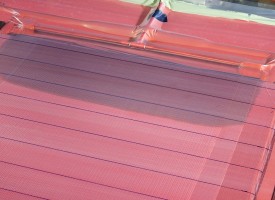
BMI-2 vacuum resin injection
NLR in collaboration with resin supplier Raptor Resins has been successful at using a new vacuum resin injection method using the so-called Bismaleimide (BMI) resin system. This method makes it possible to manufacture composite structures that can resist high temperatures. This is a first in Europe, liquid moulding of BMI and out of autoclave curing for structural applications.
In the framework of the EU FP7 project ESPOSA NLR is working together with other European partners on the implementation of this system and vacuum BMI resin injection for the manufacture of high temperature engine cowlings (nacelles). In addition, NLR is also involved in the FP7 project E-Break together with Rolls Royce and our German sister institute DLR working to develop a composite engine part.
The resin system used, called BMI -2, has been developed in the U.S. by Raptor Resins initially for use in USAF research for repair of BMI composites. BMI composites are used to a great extend in the F22 and F35 fighter. In the U.S., this resin and vacuum injection method has been tested by a number of well-known aerospace companies and is already used in the offshore industry.
The resin used has unique properties compared with current, standard available BMI resin systems and paves the way for further application of composites in high temperature applications such gas turbines. Also the processing method requiring only vacuum and heating makes it very suitable for repairs of high temperature composites.
The recently completed analysis of the manufactured product show that the material properties will meet the requirements of the aerospace and other high performance composite applications.
Also visit our Structures conceptual and detailed design capability page.

